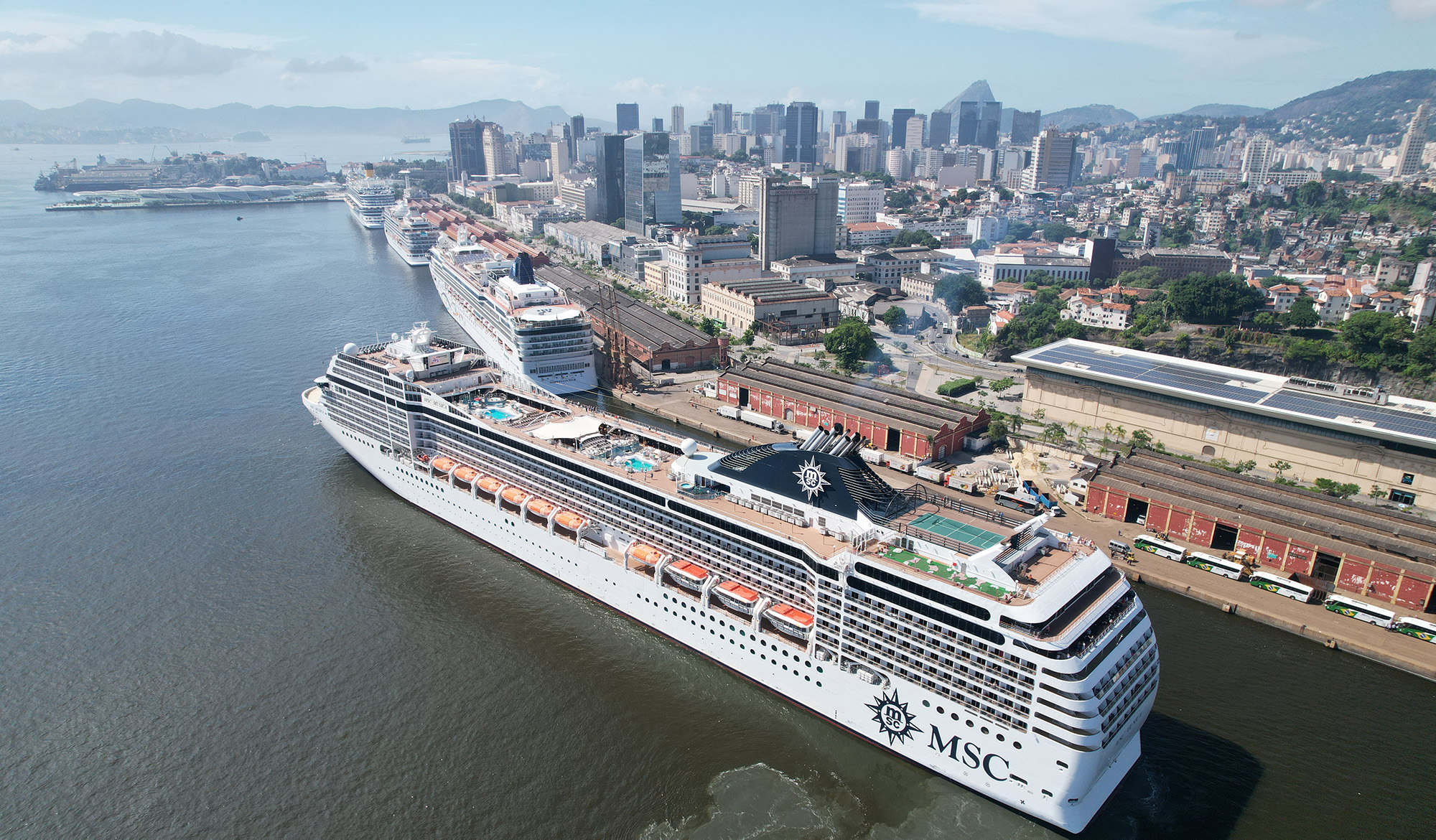(Rio de Janeiro Travel Tips) – If your cruise makes a stop in Rio de Janeiro for 8 hours, you have the chance to explore some of the city’s most famous landmarks and soak in its vibrant atmosphere. Below is an optimized itinerary to help you make the most of your short visit.
What to Do in Rio de Janeiro During a Cruise Stop
- Visit Christ the Redeemer
- Sugarloaf Mountain
- Walk Along Copacabana
- Lunch in Ipanema
- Explore the Historical City
- Santa Teresa (Final Stop)
- Safety, Clothing, Traffic

How can we help you in Rio?
We offer private Transportation to/from the Cruise Port as well as exclusive full-day shore excursions. Fill out the form below, and we will be happy to assist you!
What to Do in Rio de Janeiro During a Cruise Stop
Hour 1-2: Visit Christ the Redeemer
Start your day with a visit to Christ the Redeemer, one of the New Seven Wonders of the World and one of the greatest symbols of Brazil. Located at the top of Corcovado Mountain, 710 meters above sea level, the monument offers one of the most impressive views of Rio de Janeiro.

To get there from the cruise terminal, you can opt for a pre-booked tour, a taxi or an Uber. Another option is to take the Corcovado Train, one of the most traditional and pleasant ways to climb the mountain. The train crosses the Tijuca Forest, providing a journey surrounded by lush tropical vegetation and an enchanting experience before you even reach your final destination.
Tip: To avoid long lines and ensure a more peaceful visit, buy your tickets in advance. Morning hours are usually less crowded and offer better conditions to enjoy the view.
When you reach the top, you will be greeted by the majestic statue of Christ the Redeemer, standing 38 meters tall and with open arms in welcome. The work, inaugurated in 1931, is one of the most visited tourist attractions in the world and attracts millions of tourists every year. In addition to its religious and cultural importance, Christ the Redeemer offers a spectacular viewpoint from which you can admire Sugarloaf Mountain, Guanabara Bay, Maracanã, Copacabana and Ipanema beaches, and much of the city.
What to Do in Rio de Janeiro During a Cruise Stop
Hour 3: Sugarloaf Mountain
After visiting Corcovado, head to Sugarloaf Mountain, another of Rio de Janeiro’s most iconic landmarks. This impressive rock formation, which rises 396 meters above sea level, offers one of the most spectacular views of the city. The journey to the top is made via the famous Sugarloaf cable car, a modern cable car that provides an unforgettable experience.
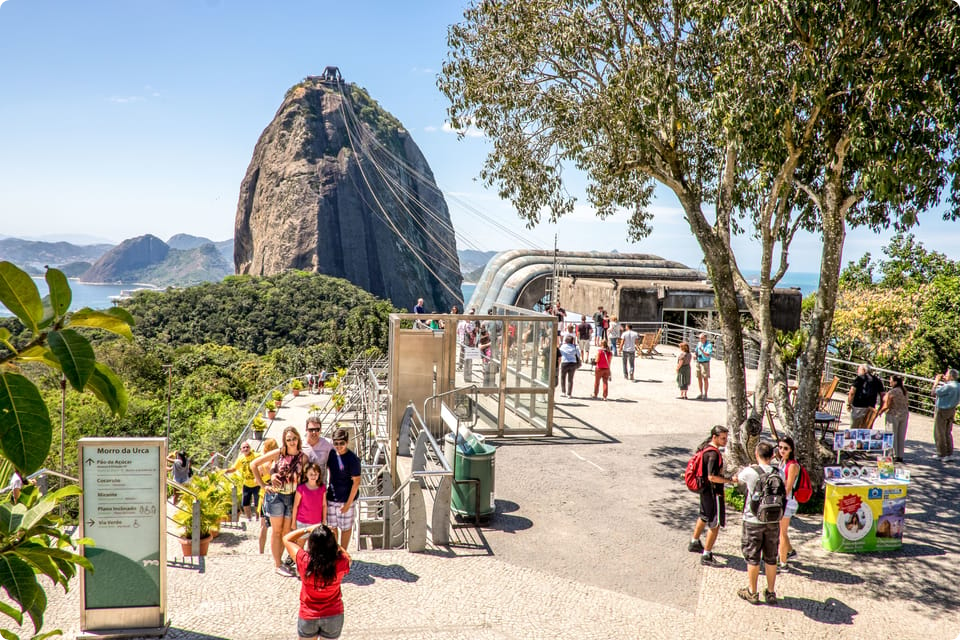
The cable car ride is carried out in two stages. The first takes visitors to Morro da Urca, an excellent viewpoint with panoramic views of Botafogo Beach, Guanabara Bay and Flamengo Bay. In addition to the stunning scenery, this location has restaurants, souvenir shops and interactive exhibits about the history of the cable car and the region.
Tip: To make the most of your visit, it is recommended to go in the morning, when visibility is usually better and there are fewer tourists. This way, you can enjoy the place more calmly and take photos without rushing.
The second stage of the tour takes you to the top of Sugarloaf Mountain. Once there, you will be treated to a breathtaking view, encompassing the entire city of Rio de Janeiro. From there, you can see the vastness of Guanabara Bay, the Copacabana waterfront, Christ the Redeemer in the background, and even some oceanic islands.
What to Do in Rio de Janeiro During a Cruise Stop
Hour 4: Walk Along Copacabana Beach
Next, head to Copacabana Beach, one of the most famous beaches in the world and one of Rio de Janeiro’s most iconic landmarks. With its long stretch of golden sand and vibrant blue sea, Copacabana attracts visitors from all over the world who want to experience the pulsating energy of this iconic Rio destination.

When you arrive at the beach, one of the first things that will catch your eye is the black and white Portuguese stone promenade, forming the famous wave pattern. This promenade, designed by landscaper Burle Marx, is one of Rio de Janeiro’s best-known symbols and a perfect place for a relaxing walk. As you walk along its length, which stretches for approximately 4 km, you can admire the stunning scenery and feel the sea breeze.
The atmosphere in Copacabana is always vibrant and full of life. During the day, the beach is filled with sunbathers enjoying the sun, locals playing sports like footvolley and beach tennis, and street vendors selling everything from colorful bikinis to local handicrafts. It is impossible not to be infected by the cheerful and welcoming energy that this place provides.

One of the most refreshing and traditional experiences when visiting Copacabana is to enjoy a cold coconut water. Several vendors spread along the shore offer fresh coconuts, cut on the spot, providing a natural and invigorating drink. In addition to being a healthy and hydrating option, drinking coconut water while gazing at the sea is a true Rio ritual. If you prefer, you can also try the famous mate with lemon and Globo cookies, two classics of the Rio beach.
For those looking for a little more fun, Copacabana also offers a multitude of leisure options. The kiosks spread along the shore are great for relaxing with a drink or snack while enjoying the view. In addition, for the more adventurous, it is possible to rent stand-up paddle boards or kayaks and explore the sea in a different way.
What to Do in Rio de Janeiro During a Cruise Stop
Hour 5: Lunch in Ipanema
A short drive from Copacabana will take you to the charming neighborhood of Ipanema, one of Rio de Janeiro’s most iconic and sophisticated areas. Famous for its beautiful beach, laid-back atmosphere and vibrant culture, Ipanema is the perfect place to enjoy a delicious, authentic Brazilian lunch. The neighborhood offers a wide variety of restaurants and traditional dishes to suit all palates.
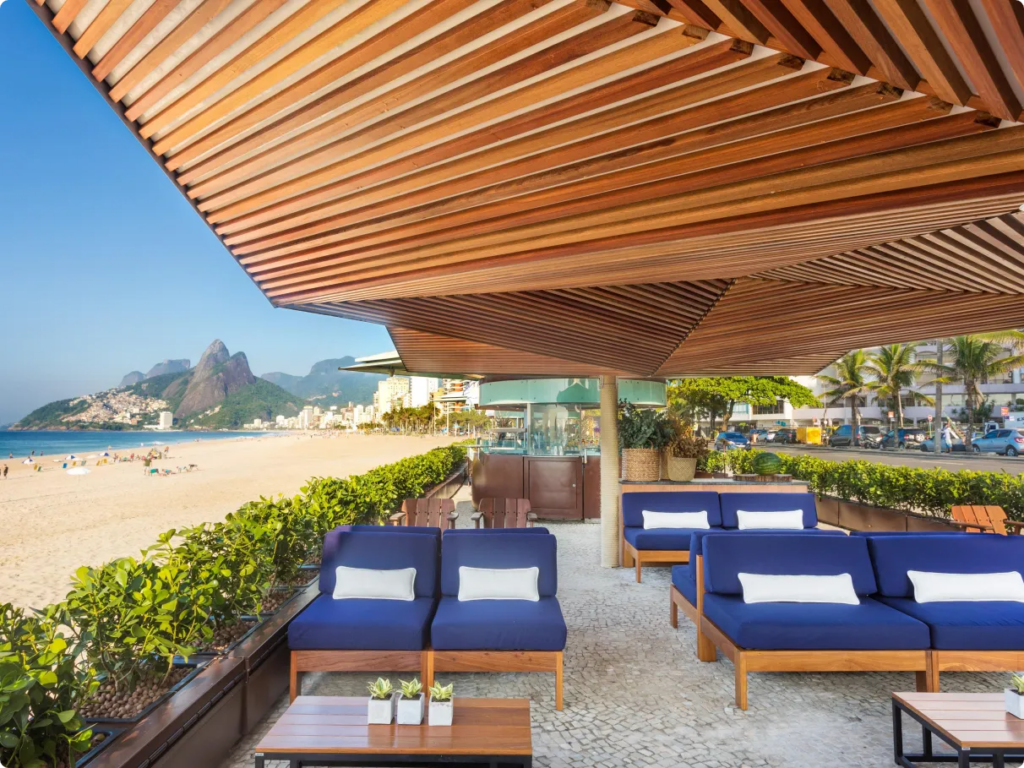
When visiting Ipanema, you can’t miss out on trying some of the most iconic dishes of Brazilian cuisine. One of the most famous is feijoada, considered Brazil’s national dish. It is a hearty stew of black beans, slowly cooked with various cuts of pork and beef. Traditionally, feijoada is served with white rice, sautéed kale, crispy pork rinds, farofa and orange slices, creating a perfect balance of flavors. This dish is a true gastronomic experience that reflects the richness of Brazilian culture.
Another unmissable option is moqueca, a seafood stew typical of the Bahia and Espírito Santo regions. Prepared with fresh fish, shrimp or seafood, moqueca is slowly cooked in a tasty broth made with coconut milk, palm oil, tomatoes, onions, peppers and coriander. The result is an aromatic and creamy dish, usually accompanied by rice and pirão. This option is ideal for those who want to experience an authentic Brazilian flavor with indigenous and African influences.
For meat lovers, picanha is an excellent choice. This cut of beef is highly appreciated by Brazilians due to its juiciness and intense flavor. Picanha is usually grilled on the barbecue and served with sides such as rice, feijão tropeiro, vinaigrette and farofa. This dish is a true celebration of the Brazilian barbecue tradition and is a sure choice for those who want to try an authentic Carioca flavor.
Ipanema also has renowned restaurants that offer unforgettable gastronomic experiences. One of the most famous is Garota de Ipanema, known for its connection to the iconic song “Garota de Ipanema” by Tom Jobim and Vinícius de Moraes. The restaurant is a historic landmark in the city and serves traditional Brazilian dishes, with picanha being one of the house’s specialties. The relaxed atmosphere and cultural legacy make this place a must-see.
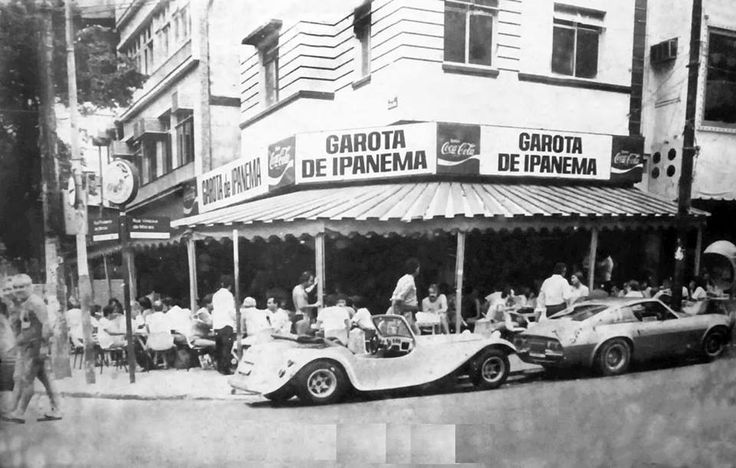
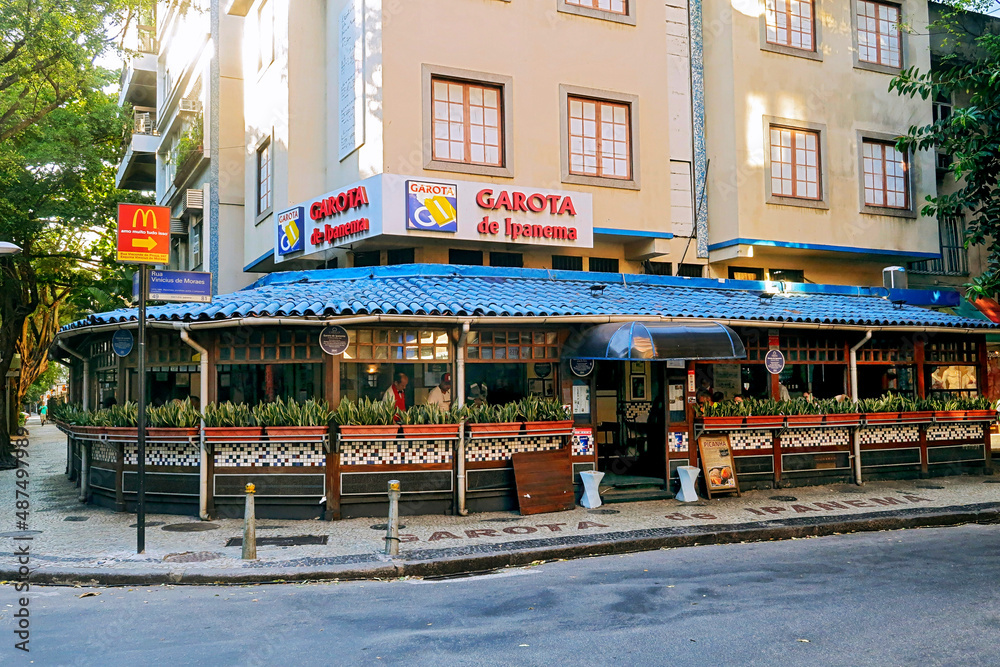
What to Do in Rio de Janeiro During a Cruise Stop
Hour 6: Explore the Historic Downtown
After lunch, a great way to continue exploring the marvelous city is to visit Rio de Janeiro’s historic center. This area is full of iconic landmarks that tell the city’s story through their architecture, culture, and vibrant energy. Not-to-be-missed highlights include the Selarón Steps, the Rio de Janeiro Metropolitan Cathedral, the City Theater, and the Arcos da Lapa.
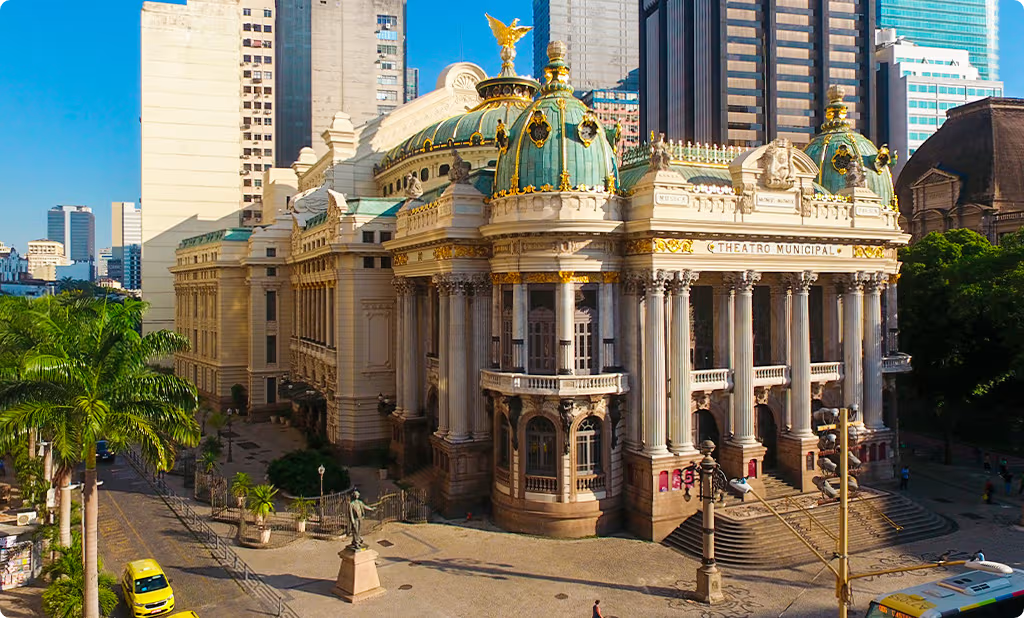
The first stop on your tour of the historic center should be the Selarón Steps, one of Rio’s most photographic settings. Created by Chilean artist Jorge Selarón, this colorful staircase connects the neighborhoods of Santa Teresa and Lapa. The artist spent years of his life decorating the steps with tiles from different parts of the world, creating a vibrant mosaic full of history. As visitors climb the 215 steps of the staircase, they can admire the details of the pieces and find references to different cultures. In addition to being a famous tourist attraction, the staircase has become a symbol of Rio de Janeiro’s diversity and creativity.
Next, head to the Catedral Metropolitana de São Sebastião do Rio de Janeiro, better known as the Metropolitan Cathedral. Unlike traditional colonial traditions, this cathedral impresses with its modernist design and conical shape, inspired by the Mayan pyramids. Built between 1964 and 1979, its structure stands out in the urban landscape of the city center. The interior of the cathedral is equally impressive, with enormous stained glass windows that stretch from the floor to the ceiling, creating a spectacular play of light. With a capacity to accommodate more than 5,000 worshippers, the place is not only a religious space, but also an impressive architectural attraction. It is worth going inside and taking a moment to appreciate the grandeur of this unique temple.
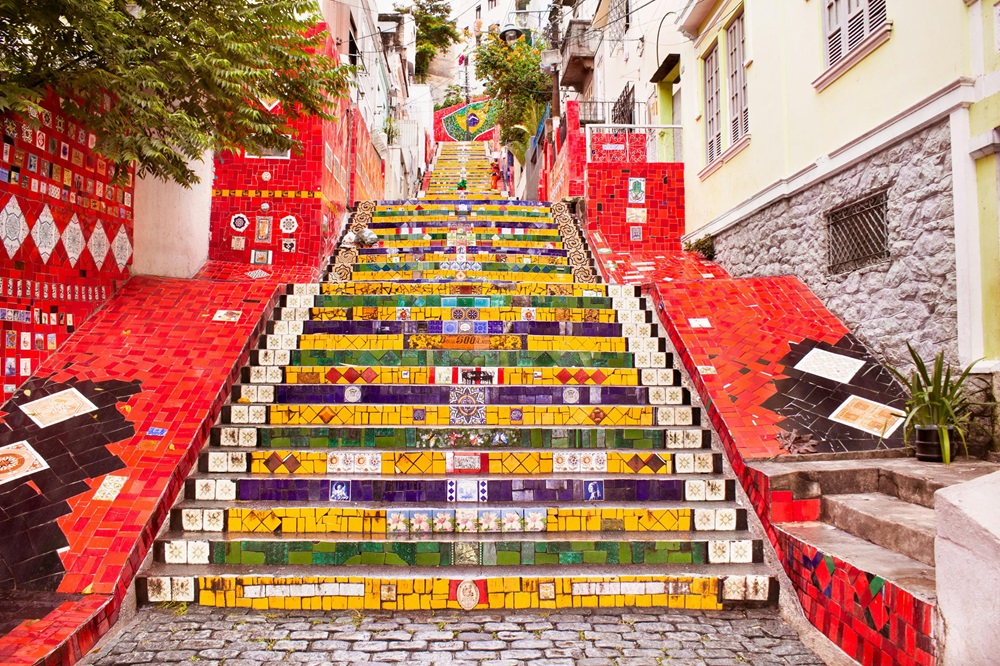
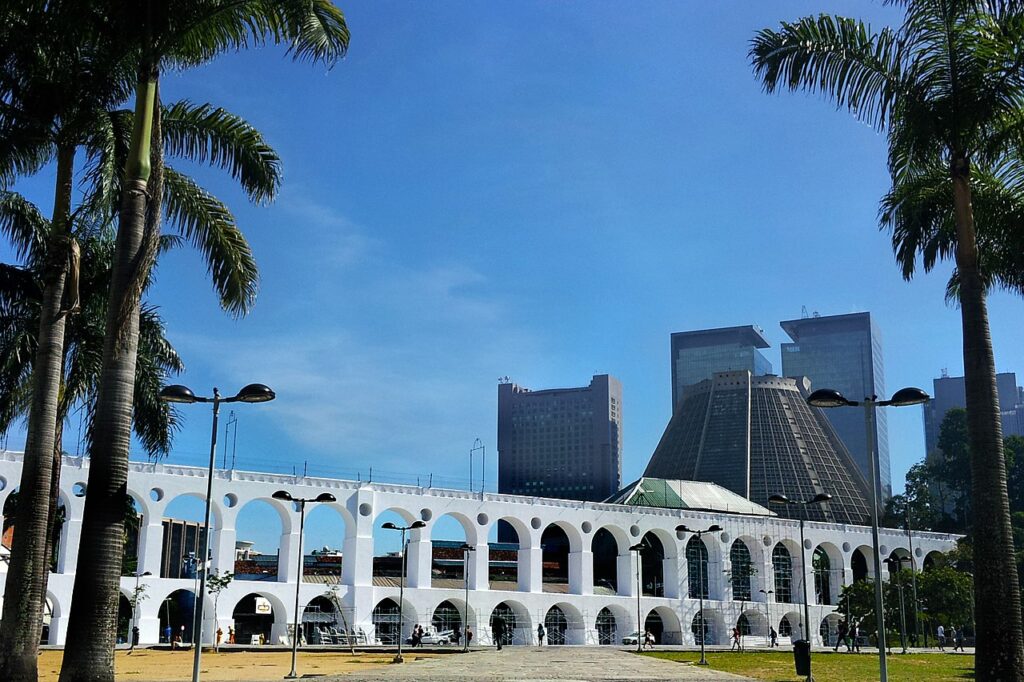
Finally, end your visit to the historic center by exploring the Arcos da Lapa, one of the most emblematic monuments in the city. Originally built in the colonial period as an aqueduct to transport water from the Rio Carioca, the Arcos da Lapa have become one of Rio’s most recognizable symbols. With its 42 white Roman-style arches, the monument contrasts with the surrounding modern buildings, providing a fascinating insight into the city’s history and evolution. Today, in addition to being an important historical landmark, the area around the Arcos da Lapa is known for its lively nightlife, with a variety of bars, samba houses and parties that attract locals and tourists alike. If you want to end your tour, this is a great opportunity to enjoy a bit of the neighborhood’s bohemian atmosphere.
What to Do in Rio de Janeiro During a Cruise Stop
Hours 7-8: Santa Teresa and Return to Cruise Port
If time permits, a quick detour to the Santa Teresa. This charming and historic neighborhood is a vibrant area known for its colonial architecture, winding streets, lush greenery, and artistic atmosphere. Santa Teresa has been a hub for artists, musicians, and creatives for many years, and it offers a unique, bohemian vibe that makes it a must-see for those visiting Rio.
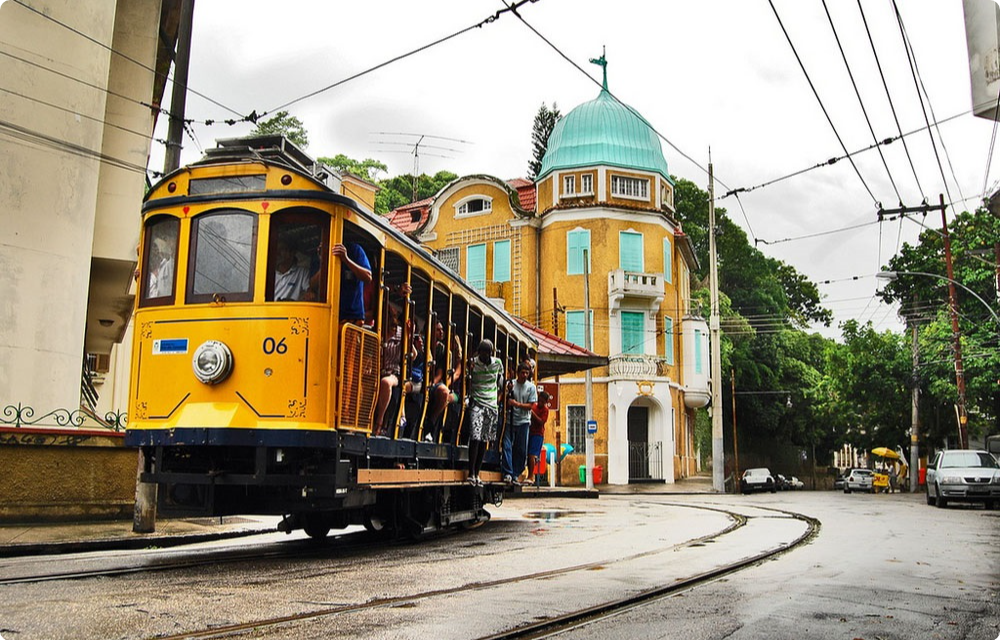
Santa Teresa is famous for its picturesque streets, which are lined with colonial-era buildings, art studios, and cozy cafes. The area’s winding, cobbled streets create a sense of old-world charm, and walking around is like stepping back in time. Take a stroll through the neighborhood to admire the charming architecture, colorful murals, and lush gardens. You’ll find hidden gems, boutique shops, and quaint spaces at every turn, making it a photographer’s dream.
One of the best ways to experience Santa Teresa is by riding the Bondinho, a historic tram that has been operating since the early 20th century. The tram offers a unique, scenic route up and around the hill, providing stunning views of the neighborhood and downtown Rio. The Bondinho is an iconic feature of Santa Teresa, and riding it is a nostalgic experience that allows you to see the neighborhood from a different perspective.
Ensure you return to Rio Cruise Port with enough time before departure, making the most of your short yet unforgettable visit to Rio.
What to Do in Rio de Janeiro During a Cruise Stop
Final Tips
Safety: Rio is beautiful but requires some caution.
- Stay in tourist-friendly areas – Stick to well-known attractions like Copacabana, Ipanema, Sugarloaf, and Christ the Redeemer.
- Avoid displaying valuables – Keep cameras, phones, and jewelry discreet.
- Use reliable transport – Uber is safer and cheaper than street taxis.
- Be cautious in crowded areas – Watch out for pickpockets, especially at beaches and markets.
- Know where NOT to go – Avoid favelas unless on a guided tour.
- Keep small cash amounts – Avoid carrying large bills.
Clothing & Essentials: Rio has a warm, tropical climate
- Wear breathable, comfortable clothes – It’s usually hot and humid.
- Sunscreen, sunglasses, and a hat – Protect yourself from the strong sun.
- Comfortable walking shoes – Many attractions require walking or stairs.
- Swimsuit & towel – If you plan to visit the beach.
- Light rain jacket or poncho – If visiting during the rainy season (Dec–March).
Transportation: Traffic in Rio can be unpredictable
- Plan extra travel time – Moving between attractions can take longer than expected.
- Uber is the best option – Safer and more reliable than street taxis.
- Avoid rush hours (7-9 AM & 5-7 PM) – Traffic can be very slow.
- Pre-book Christ the Redeemer & Sugarloaf tickets – Saves waiting time.
- Stay close to your cruise port – Ensure you’re back at least 1 hour before departure.
You might also be interested in:
- Getting to Rio de Janeiro Cruise Port
- Rio de Janeiro Safety Tips
- Cruise Port Transfer Rio de Janeiro
- Rio de Janeiro Shore Excursions

